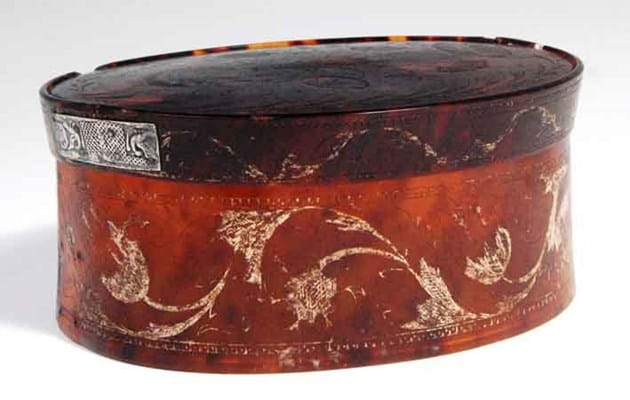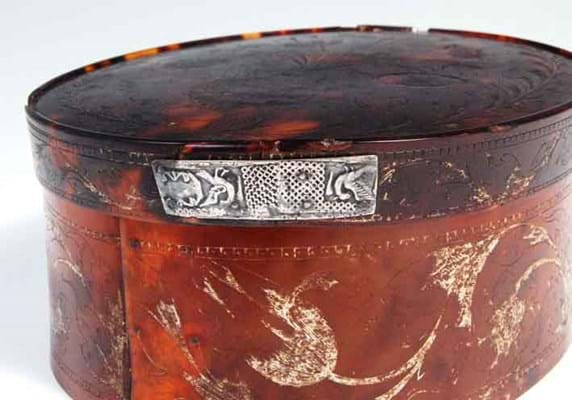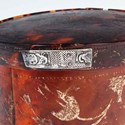An area inhabited by Arawak natives when first sighted by Columbus, on his second voyage in 1494, as a colonial settlement, it was notorious as the haunt of privateers employed by the English and Dutch to nip at the heels of Spanish empire building.
At the height of its popularity when the Dutch explorer Jan van Riebeeck (1619-77) visited, he observed gaudy displays of wealth, loose morals and one drinking house for every ten residents.
Even the local wildlife joined in: "The parrots of Port Royal gather to drink from the large stocks of ale with just as much alacrity as the drunks that frequent the taverns that serve it," he wrote.
But alongside the parrots, the pirates and the prostitutes - and the early sugar and slave traders who would make Jamaica such a valuable British possession for more than 150 years - there were also four goldsmiths (booty seized from Spanish treasure ships was plentiful) and a variety of other artisans making goods to send 'home'.
Objects fashioned in tortoiseshell in Port Royal rank among the earliest surviving works of art made in the Caribbean under European influence.
The shell of the hawksbill turtle was highly prized in 17th century Europe for its exotic colour, translucency and brilliant shine, but today these rare keepsakes - typically small boxes and combs - are admired for their great sense of history and place.
The oval-form sailor's ditty box and cover measuring 6in (15cm) offered for sale by Lacy Scott & Knight of Bury St Edmunds on September 15 by a local client whose husband had been in the auction business (chiefly in agricultural rather than chattels sales) was engraved to the lid with an urn issuing tulips and sunflowers and inscribed EF and Jamaica 1678.
Similar flowers scrolled around the sides, while at least one of two unmarked silver mounts - that embossed with two stylised birds and circles - was thought to be original. Estimated at £800-1200, it sold to an American buyer at £3300 plus 17.5% buyer's premium.
Decorative Style
A related tortoiseshell case with combs dated 1673 resides in the Victoria & Albert Museum where the cataloguer speculates that the style of the decoration across the surviving works suggests they may have been made by the same artist - perhaps a European but quite possibly an African or Arawak.
The engraved decoration to the V&A case relates directly to Britain's seizure of the island in 1655: the newly awarded arms of Jamaica are engraved on one side, while three plants important to Jamaica's economy (coffee, sugar cane and tobacco) are represented on the other.
Readers may also recall another tortoiseshell and silver-mounted comb and case sold by Bonhams Edinburgh back in June 2006 for £8400. That example, inscribed Port Royal in Jamaica 1688, must have been among the last tortoiseshell objects produced in Port Royal.
Doubtless satisfying those who had called the settlement 'the Sodom of the New World', more than half of the town's 2000 buildings sank beneath the sea during the Great Earthquake of 1692 - after which Kingston became Jamaica's key trading centre.










